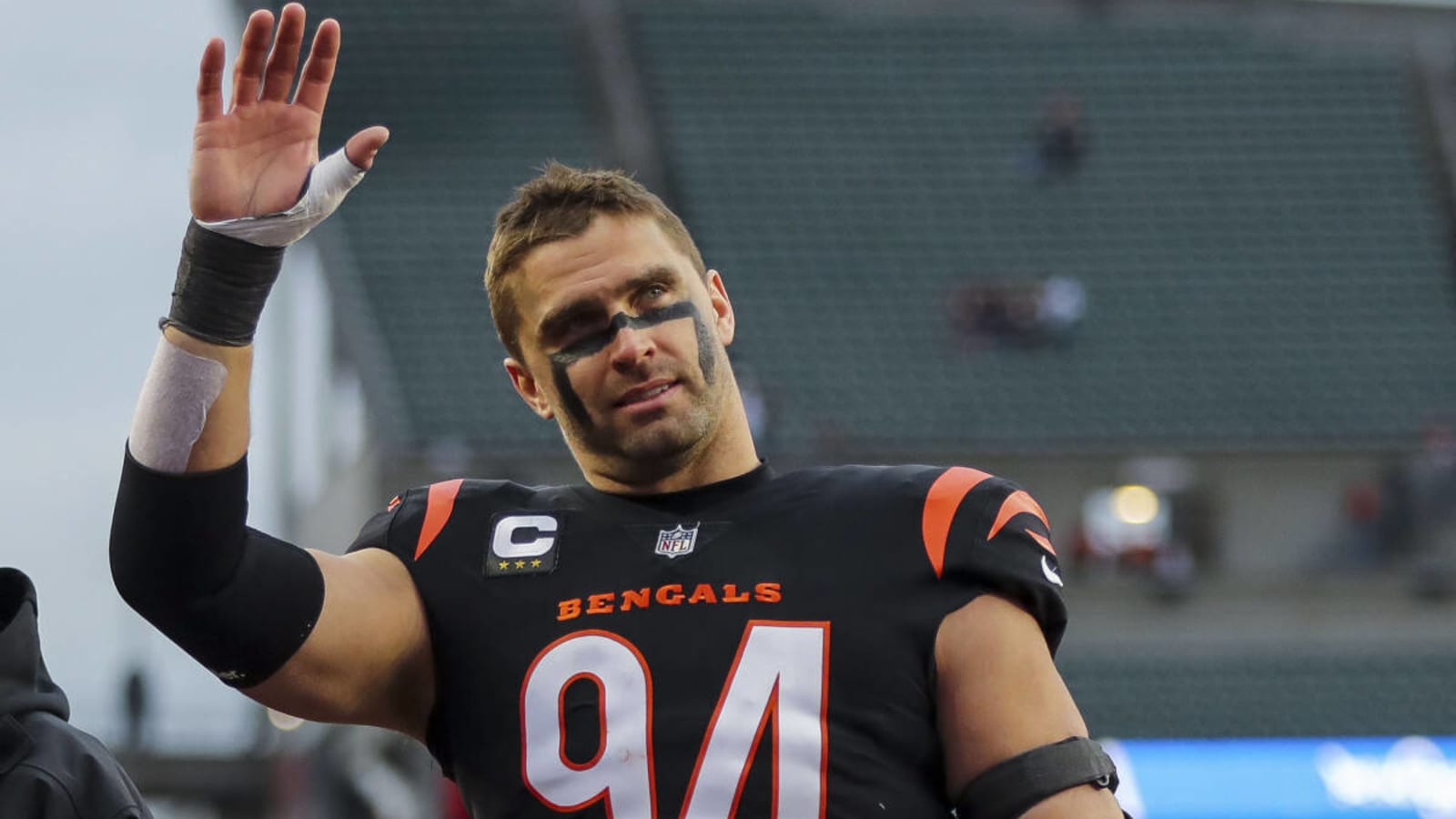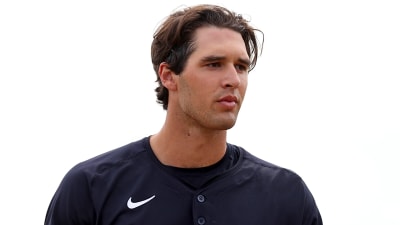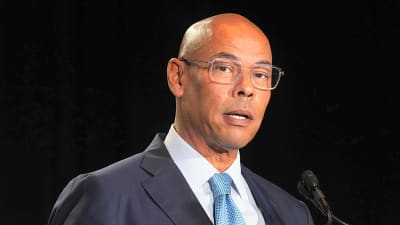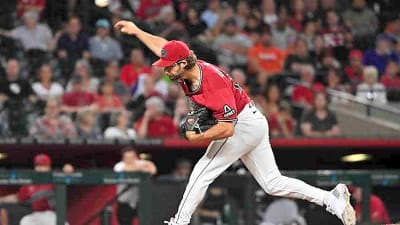
Someone asked me on Twitter (X to be lame and official) if Sam Hubbard was the worst defensive end in the NFL last year.
Excuse me??
What's crazy is that person wasn't the only one wanting to talk about the Cincinnati Bengals edge defender. There are too many to include them all, so I'll pepper them throughout the article. I had no idea the resurfacing of running back Joe Mixon's contract situation would spark a divisive conversation about a player who's about as safe from getting cut as Joe Burrow.
But we're here, so let's talk about Hubbard, and why cutting him is not along the same lines as cutting Mixon, safety Nick Scott, or any other player with questionable futures in Cincinnati.
What is Sam Hubbard's value
Before we tackle this answer, we must examine what Hubbard got paid, and why the Bengals paid him.
After three years of development through losing seasons, the Bengals prioritized Hubbard, a third-round draft pick out of Ohio State, as a core member of the defense and locker room as a whole. The Cincinnati native showed early signs of being exactly who he remains to be today. He's a superb edge-setting run defender whose pass rushing performances greatly depend on the competition.
Why wouldn’t Sam Hubbard be a cap casualty before Mixon or Hill?
— Drew (@Drew08689238) February 21, 2024
His production is the lowest amongst the 3 and you literally drafted his replacement with a first round pick last year. Therefore, that 6 million savings, unlike Mixon or Hill you wouldn’t have to go sign a guy.
Hubbard inked a four-year, $40 million extension with just $10 million guaranteed leading up to the 2021 season. This contract proved to be another example of how the Bengals like to spend their money; a pay-as-you-go method without guaranteeing too much out the gate. You don't see these kinds of long-term contracts being handed out in free agency, as the guarantees aren't nearly as high to beat out competing teams.
The Bengals knew they could convince Hubbard to sign because the $10 million Average Annual Aalue (AAV) was greater than he'd see on the open market. He's never been anywhere close to an elite pass rusher, and those are the players who break the bank. They did the same a year prior when signing Mixon to a four-year deal with an AAV of $12 million. Mixon's deal coincidentally featured $10 million guaranteed as well.
Damn this seems like a different energy from Paul Dehner Jr.
— WhoDey KnowitALL (@WhoDeyKnowitALL) February 21, 2024
Wonder if he would have as much vitriol in a piece about Sam Hubbard?
Three years after extending Hubbard is indeed a good time to evaluate what his true worth is. His reputation as one of the best run-stopped edge defenders in the league is well earned. His 82 run stops from 2021-22 ranked third at the position. He fell behind that average in 2023 as the entire Bengals defense forgot how to stop the run for the majority of the season.
That's all good and well, but edge defender contracts get judged in the name of pass rushing production. Hubbard's pass rush win rate has hovered around the same area since signing his contract, as has his pressure rate, according to Pro Football Focus.
Pro Football Focus
| Year | Pass Rush Win Rate | Pressure Rate |
|---|---|---|
2021 |
9.1% |
9.5% |
2022 |
9.3% |
11.2% |
2023 |
8.2% |
9.8% |
You may think these numbers are fairly pedestrian. You'd be correct from a league-wide standpoint. That Hubbard saw a drop off from this past year is also pretty damning evidence of his value going in decline.
So that's it then, yeah? The Bengals should part ways with Hubbard, save some cash and cap space, and pursue an upgrade at the position. They're likely to do the same with Mixon, so why does Hubbard get special treatment?
What about Sam Hubbard? What is keeping him around doing for
— (@screamingwhodey) February 21, 2024
our title hopes? What can be done about his contract?
It's not because he was born and raised in Cincy. It's not because he's a locker room leader. It's not even because of his iconic fumble return for a touchdown two postseasons ago, or his friendship with Burrow going on 10 years now.
The position Hubbard plays is the reason why he's not going anywhere.
Why the Bengals won't touch Sam Hubbard's contract
Here's an obvious statement: edge defenders are more valuable than running backs.
Let me amend that. ALL DEFENSIVE POSITIONS are more valuable than running backs.
I'm not talking about the best edge defenders are worth more than the best running backs. I mean the likelihood of a single running back being more valuable to a team's success than the depth of any position on defense is minuscule. Your Christian McCaffrey's and Derrick Henry's are cute, but they don't move me as neither one has helped win a Super Bowl. It's been over a decade since a Super Bowl champion rostered a starting running back that counted for more than 1.2% of the salary cap.
Running the ball helps in winning. It's also been proven countless times the specific runner of the ball isn't the most important aspect in accomplishing that. The NFL knows this better than some of its fans when gauging the dip in running back contracts. We just saw two of the league's best in Saquon Barkley and Josh Jacobs hold out just to get deals ever so slightly better than the franchise tag at the position.
If you're cutting Mixon you should also cut Hubbard
— DM3 (@dalemartin156) February 21, 2024
Why does positional value matter with this? The more valuable the position, the more the replacement will cost.
The Bengals would incur $6,120,588 million in cap space should the Bengals cut him. They could designate him as a post-June 1 cut and save $8,120,588, but they've never been known to push dead cap into future years. They wouldn't start now.
That's about $6 million in cap to replace him and his 2,795 snaps over the past three years. There aren't many taller hurdles the Bengals can unnecessarily place in front of themselves.
The last thing the Bengals will want to do on top of finding a starting right tackle, tight end, potentially two defensive tackles, and various depth signings is replace another starter at one of the highest paid positions in the sport. Moving on from Hubbard will result in the Bengals spending about the same for a wash or downgrade, or having to pay a premium for an upgrade. That's just not in the cards this offseason.
Even if they decide to promote Myles Murphy to take Hubbard's place and replace Murphy as the third edge, that's a risk on its own. Murphy showed promise towards the end of last season, but is he ready to take on 50 snaps a game? They need to see more out of him in 2024 before they make a Dax Hill-for-Jessie Bates III mistake again.
It shouldn’t be hard to justify Sam Hubbard taking a pay cut
— Tony Edwards (@TonyKing2023) February 21, 2024
The Bengals can cut Mixon and replace his production with a cheaper option far easier than doing the same with Hubbard, and that has nothing to do with either player's ability. It's why what happened with Mixon last year actually happened.
If Mixon wasn't going to take a pay cut, guess what would've happened. He would've gotten cut! That's how it works! You approach players with the uncomfortable topic of reducing their pay if you're prepared to go the extra mile. That's exactly what happened with Giovani Bernard, another running back.
Call it positional privilege if you'd like, but Hubbard has more leverage in this fairytale of a scenario.
This conversation started a year early, and from my perspective, it derived from fans being sensitive about Mixon's status. The comparison is apples and oranges because of the differences in positional value.
Next offseason will be the time to discuss if the Bengals can and should move on from Hubbard. There's not a wise way to do so now with other tasks to complete.
More must-reads:
- Chargers RB Najee Harris injured in fireworks incident
- AFC under-the-radar rookies, training camp reporting dates
- The 'NFL Offensive Rookie of the Year winners' quiz
Breaking News
Trending News
Customize Your Newsletter
 +
+
Get the latest news and rumors, customized to your favorite sports and teams. Emailed daily. Always free!








